Understanding Activated Carbon Filters
Activated carbon filters are essential components in many air purifiers, renowned for their ability to efficiently trap and remove a range of pollutants from the air. These filters are primarily composed of activated carbon, a form of carbon that has been treated to develop an extensive network of pores. This unique structure significantly enhances the surface area of the carbon, allowing it to adsorb a variety of air contaminants effectively.
The manufacturing process of activated carbon generally involves carbonization and activation. Initially, raw materials such as coconut shells, wood, or coal are heated to high temperatures in an oxygen-free environment, a process known as carbonization. Following this, activation occurs, during which the carbon is exposed to steam or other activating agents at elevated temperatures. This procedure opens up the structure of the carbon, resulting in an increased surface area—often exceeding 1000 square meters per gram—which optimizes its adsorption capability. This characteristic is paramount in air purification applications as it allows activated carbon to capture volatile organic compounds (VOCs), odors, smoke, and various harmful gases.
In terms of types, there are various forms of activated carbon available, each tailored for specific air purification tasks. Granular activated carbon (GAC) is commonly used in air purifiers due to its larger particle size and convenient handling. Moreover, powdered activated carbon (PAC) is utilized for applications requiring rapid adsorption. Each type exhibits similar basic properties but may differ in performance based on the specific contaminants targeted. The science behind activated carbon’s efficacy lies in its adsorption processes, where impurities adhere to the surface of the activated carbon, resulting in cleaner, fresher air.
How Activated Carbon Filters Work
Activated carbon filters operate on the principle of adsorption, a process distinct from absorption. In adsorption, molecules adhere to the surface of the activated carbon due to molecular forces, allowing the filter to trap a wide variety of contaminants from the air. The structure of activated carbon consists of a vast network of micro-pores, which significantly increase the surface area available for this adsorption process. This unique characteristic means that even small concentrations of pollutants can be effectively captured over time.
When air passes through an activated carbon filter, various gaseous compounds such as volatile organic compounds (VOCs), smoke, and unpleasant odors are attracted to the activated carbon’s surface. VOCs, which can emanate from household items like paints, cleaning supplies, and furniture, are particularly harmful because they can contribute to indoor air pollution. Through the adsorption process, these compounds cling to the activated carbon particles, removing them from the air stream and thereby improving indoor air quality.
Real-life scenarios demonstrate the efficacy of activated carbon filters in both residential and commercial settings. In a home equipped with an air purifier featuring an activated carbon filter, residents often notice a reduction in lingering odors from cooking or pets. Similarly, in a workplace environment, such filters can help mitigate the effect of VOCs released during the manufacturing process or from office equipment, ensuring a healthier workspace for employees. The incorporation of activated carbon filters in air purifiers not only addresses immediate air quality concerns but also contributes to long-term health benefits by reducing exposure to harmful airborne particles.
Overall, the mechanism behind activated carbon filters highlights their importance in improving air quality across various environments, demonstrating their role as an effective solution for trapping harmful pollutants and enhancing respiratory health.
Benefits of Using Air Purifiers with Activated Carbon Filters
Air purifiers equipped with activated carbon filters offer numerous advantages that significantly enhance indoor air quality. One of the primary benefits of these filters is their efficiency in removing harmful gases and odors from the air. Activated carbon has a large surface area and is highly porous, enabling it to absorb volatile organic compounds (VOCs), smoke, and other pollutants that conventional filters may not capture. This process results in cleaner and fresher air, making it particularly beneficial for households situated near pollution sources or individuals who are sensitive to environmental contaminants.
Additionally, air purifiers with activated carbon filters contribute to the reduction of allergens in the environment. These can include pollen, pet dander, and dust mites, which are prevalent in many homes. By trapping these particles, activated carbon filters help minimize allergy symptoms, thus improving the overall well-being of residents, particularly for those with existing respiratory issues. Consequently, individuals suffering from asthma or allergies can experience significant relief when air purifiers with these specialized filters are used regularly.
Moreover, the presence of activated carbon filters promotes a healthier living environment by mitigating the effects of seasonal allergies and indoor air pollution. Improved air quality can lead to enhanced concentration levels, better sleep quality, and an overall increase in productivity. The importance of air purifiers in maintaining a safe and comfortable atmosphere cannot be overstated, particularly in urban settings where outdoor air quality can be compromised. Thus, utilizing air purifiers with activated carbon filters serves not only to protect physical health but also to promote mental well-being. In conclusion, the numerous benefits associated with the use of air purifiers with activated carbon filters make them an essential addition to modern households seeking to enhance indoor air quality and overall health.
Maintenance and Replacement of Activated Carbon Filters
Activated carbon filters play a crucial role in enhancing the air quality produced by air purifiers. However, proper maintenance and timely replacement of these filters are essential for them to perform effectively. The lifespan of activated carbon filters varies depending on several factors, including usage, air quality, and the volume of pollutants present in the environment. Generally, these filters should be replaced every 6 to 12 months to ensure optimal functioning.
To prolong the lifespan of activated carbon filters, regular maintenance practices are recommended. First, it is essential to clean the air purifier itself, as dust and debris can hinder the performance of the filter. Vacuums with a brush attachment can be used to gently clean the outer surfaces of the filter, allowing it to absorb odors and pollutants more efficiently. Additionally, minimizing indoor pollution sources—like smoking or using highly aerosolized products—will also help extend the filter’s effectiveness.
One key indicator that an activated carbon filter is reaching saturation is a noticeable decrease in its ability to remove odors. If you find that previously unpleasant smells are returning, it is a strong sign that the filter requires replacement. Other signs include increased dust levels in the air and frequent allergies or irritation, as these can also suggest that the filter is no longer capable of capturing airborne particles effectively.
When replacing an activated carbon filter, always follow the manufacturer’s guidelines for the specific model of your air purifier. Be sure to dispose of the old filter properly and monitor your air quality to ensure that the new filter is functioning correctly. Adopting these best practices not only maintains the integrity of your air purification system but also contributes significantly to healthier indoor air quality.
Choosing the Right Air Purifier with Activated Carbon Filters
When selecting an air purifier that incorporates activated carbon filters, it is essential to carefully consider several key factors to ensure that the chosen unit effectively meets your specific needs. One of the primary factors is the filter efficiency rating. Look for models that have high Clean Air Delivery Rate (CADR) ratings, as this reflects the unit’s capability to remove pollutants from the air quickly. A higher CADR usually signifies better performance in filtering common contaminants such as smoke, dust, and odors.
The size of the air purifier is another crucial element to consider. It is imperative to select a unit that is appropriately sized for the room where it will be used. Air purifiers typically come with specifications indicating the coverage area in square feet. Purchasing a purifier suitable for your space will optimize its effectiveness, as an undersized unit, for instance, may struggle to purify the air adequately.
Noise levels also play a significant role, particularly for users who wish to operate their air purifier in bedrooms or quiet environments. Some models feature noise ratings, often expressed in decibels (dB), allowing buyers to compare and choose a model that operates quietly. For those concerned with noise, opting for purifiers with a sleep mode or customizable fan speeds can enhance comfort during use.
Additional features, such as air quality indicators, filters’ replacement alerts, or smart capabilities, can also influence a purchase decision. These elements not only provide convenience but may also enhance your overall air purification experience. Lastly, budget considerations cannot be overlooked. Prices of air purifiers can vary widely; hence, it is critical to find a balance between features, efficiency, and affordability to suit individual preferences and financial constraints.
Families, individuals with allergies, or those with specific air quality concerns should evaluate their unique requirements to select the most suitable air purifier with activated carbon filters, ensuring an effective solution for cleaner, healthier indoor air.
| Air Purifier Brand Name | Blueair, Coway, Dyson, Honeywell, Kent, Levoit, Mi (Xiaomi), Philips, Samsung, Sharp |
|---|---|
| Technician Type | With Technician, Without Technician |
Only logged in customers who have purchased this product may leave a review.
Related products
-
Air Purifier Parts
Air Purifier Ionizer
₹3,900.00 – ₹4,500.00 Select options This product has multiple variants. The options may be chosen on the product pageRated 0 out of 5 -
Air Purifier Parts
Air Purifier Ozone Generator
₹6,500.00 – ₹7,100.00 Select options This product has multiple variants. The options may be chosen on the product pageRated 0 out of 5 -
Air Purifier Parts
Air Purifier UV Light
₹6,500.00 – ₹7,100.00 Select options This product has multiple variants. The options may be chosen on the product pageRated 0 out of 5 -
Air Purifier Parts
Air Purifier Filter Replacement Kit
₹6,500.00 – ₹7,100.00 Select options This product has multiple variants. The options may be chosen on the product pageRated 0 out of 5

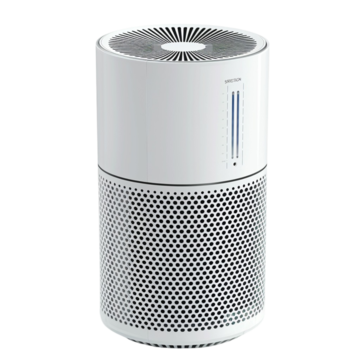
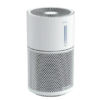
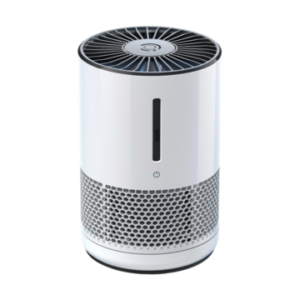
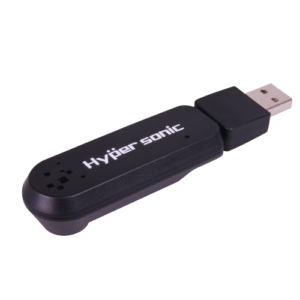
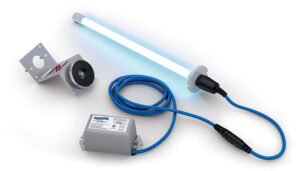
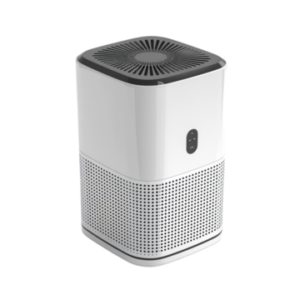
Reviews
There are no reviews yet.